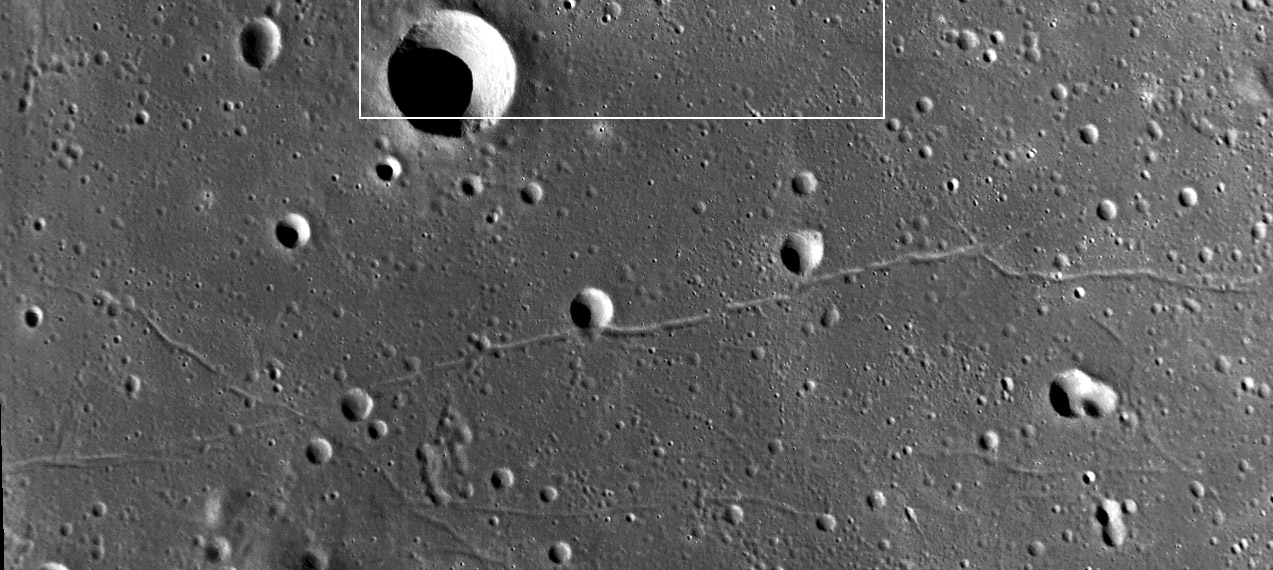August 25, 2019
More Rilles And Fewer
Originally published May 14, 2010

LRO wide angle camera (WAC) image from LRO Featured Images. Image number M119673851ME [NASA/GSFC/Arizona State University]. (Ignore the white lines - they mark something less interesting than these rilles)
The Sheepshanks Rille is hard to observe because it runs approximately E-W and thus casts few shadows. It is just north of the dark lavas of Mare Frigoris in lighter hued plains that have been considered either impact eject or older mare volcanism, lightened by highlands ejecta. I think these thin, delicate and cratered-upon rilles favor the covered mare lavas interpretation. In telescopic and Lunar Orbiter IV images essentially only the main rille (the topmost one here) is readily visible so this LRO scene reveals rille segments that were at a minimum poorly known. The main rille in the area between the two large craters has one or two interruptions where the surface materials are continuous across the rille. This is most reasonably interpreted as a lava tube whose roof has collapsed everywhere except for these two areas. The narrower and shallower rilles to the south are also not everywhere continuous suggesting they also originated as lava tubes. The lava tube origin, if correct, further buttresses the argument that the light plains here are volcanics. In comparing this image with one from Lunar Orbiter IV it appears that faint rille segments probably connect the Sheepshanks rilles to the Gärtner Rille to the east. I was going to say that testing this speculation will be possible with further release of LRO WAC images to the east, but I see that 16 year old Clementine data already confirm it! Hmm, what do we do with a rille whose two ends have different names?
Chuck Wood
Related Links
Rükl plate 5
The GLR group published a paper on this rille but I do not have a copy to see what they discovered: Raffaello Lena , KC Pau and Piergiovanni Salimbeni. 2004. Observations of the Rima Sheepshanks. Selenology 23, 1.
Yesterday's LPOD: Basinal Surprises
Tomorrow's LPOD: Passing of a Friend
COMMENTS?
Register, Log in, and join in the comments.



